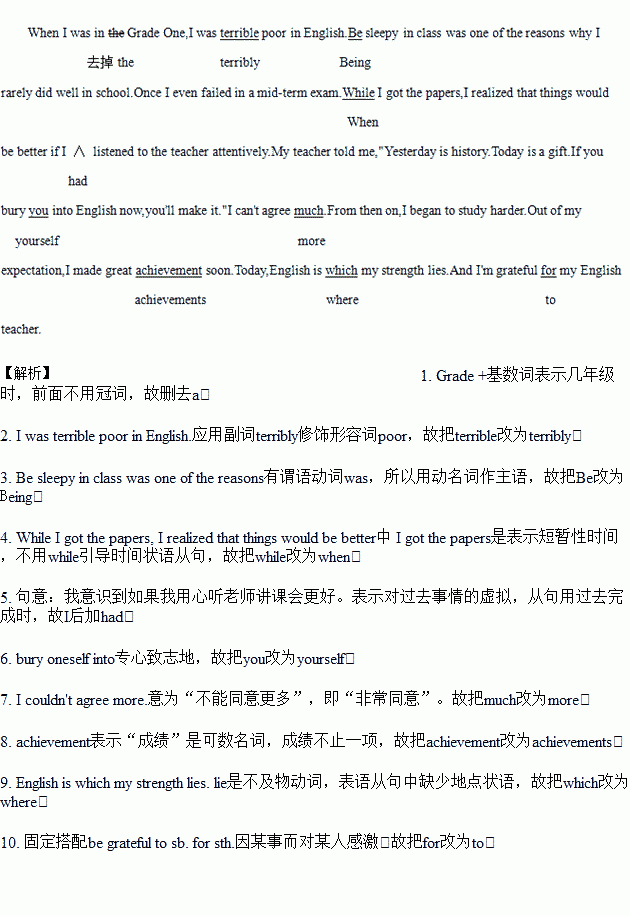题目内容
假定英语课上老师要求同桌之间交换修改作文,请你修改你同桌写的以下短文。短文中共有10处错误,每句中最多有两处。错误涉及一个单词的增加、删除或修改。
增加:在缺词处加一个漏字符号(∧),并在此符号下面写出该加的词。
删除:把多余的词用斜线(\)划掉。
修改:在错的词下划一横线,并在该词下面写出修改后的词。
注意:1.每处错误及其修改均仅限一词;
2.只允许修改10处,多者(从第11处起)不计分。
When I was in the Grade One,I was terrible poor in English.Be sleepy in class was one of the reasons why I rarely did well in school.Once I even failed in a mid-term exam.While I got the papers,I realized that things would be better if I listened to the teacher attentively.My teacher told me,"Yesterday is history.Today is a gift.If you bury you into English now,you'll make it."I can't agree much.From then on,I began to study harder.Out of my expectation, I made great achievement soon.Today,English is which my strength lies.And I'm grateful for my English teacher.
 千里马走向假期期末仿真试卷寒假系列答案
千里马走向假期期末仿真试卷寒假系列答案
